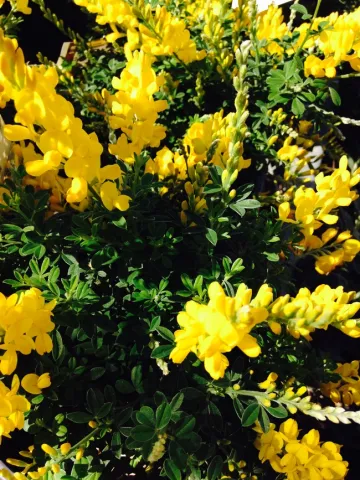
Sweet Broom
By Andrea Peck UCCE Master Gardener
Common Name: Sweet Broom
Latin Name: Genista x spachianus
Size of Plant: This plant grows 6'-8' high and 5'-6' wide.
Bloom Description: Profuse bright yellow flowers clustering along the end of the stem.
Exposure: Full Sun.
Pruning Needs: Yearly, when flowering ceases in late spring.
Water Needs: Low water needs once established.
Zones: USDA Hardiness Zone 8-10
Description: Sweet broom is a large, fast-growing, and easy-to-like bush. Cheerful yellow blooms cascade like tow-headed curls during the spring, decorating the bulk of the plant and adding a refreshing pop to your landscape. Not only will these showy flowers catch your attention and brighten your day, but they are also fragrant, attracting butterflies, birds, and other pollinators. When not blooming, the shrub is attractive and easy to care for, Sweet broom is a deciduous bush with evergreen leaves and a gentle, arching lean to the branches. When full size it provides a nice, yet not too overwhelming screen.
Prune older wood, about one-third of the plant, during the late spring or summer, after the bloom. Pruning later in the year may interfere with blooming and not pruning at all may lead to a permanently scraggly, unkempt growth habit. Irrigate consistently during the first year in order to establish a deep root system. Sweet broom is known for its strong roots which make them ideal for hillsides and to stabilize soil. Fertilize once a year before blooming occurs. Once established, sweet broom is drought tolerant, but, as is the case with most low-water plants, it benefits from irrigation during extended dry, hot periods. Sweet broom thrives in almost any landscape environment including wildlife gardens, rock gardens, and patio containers.

